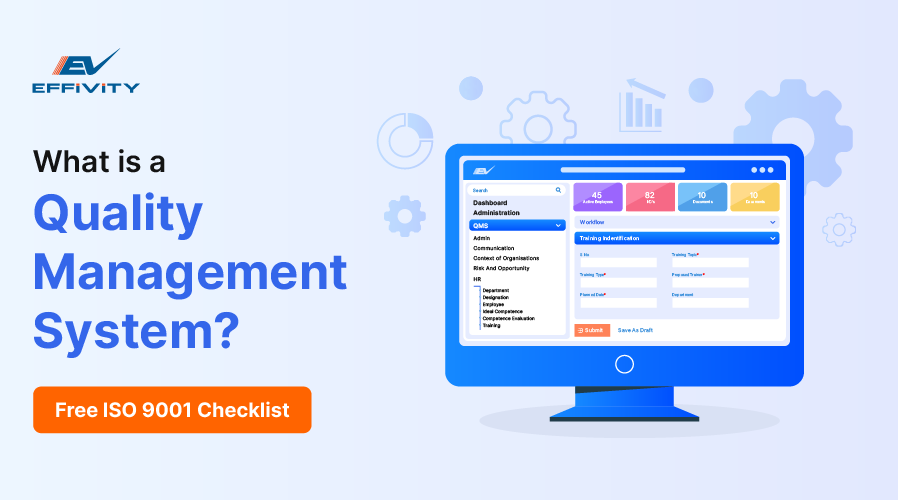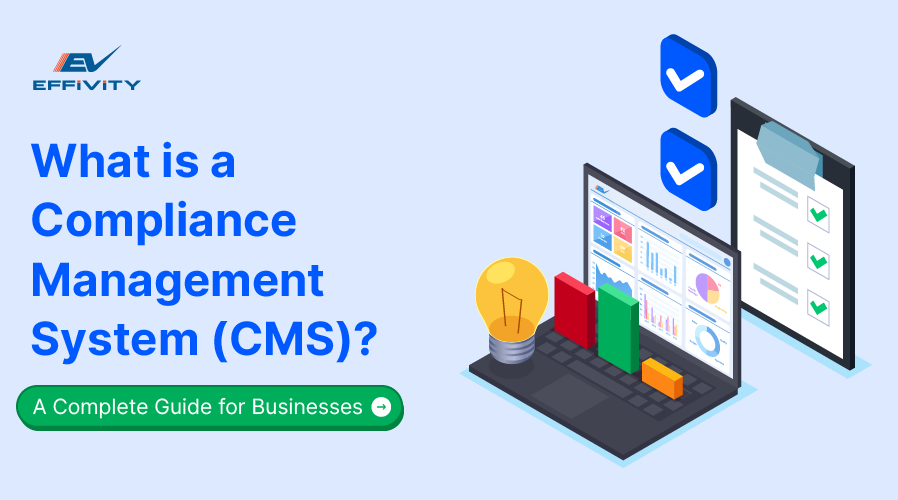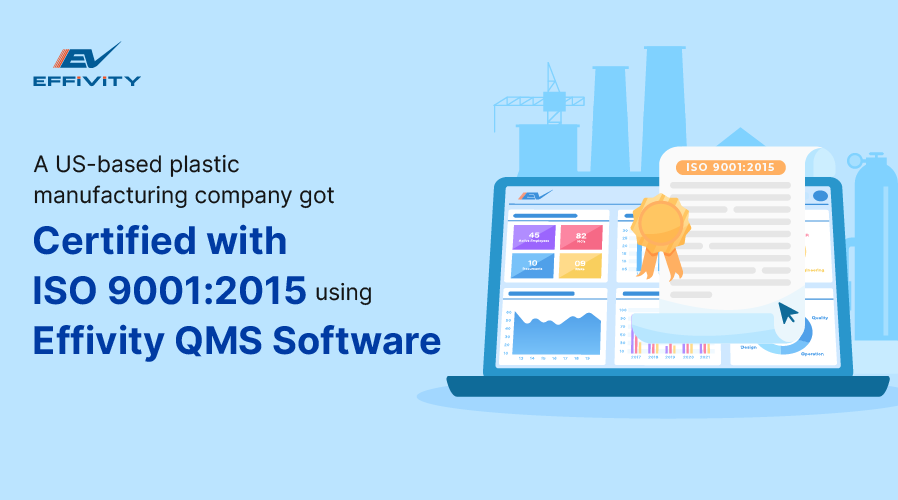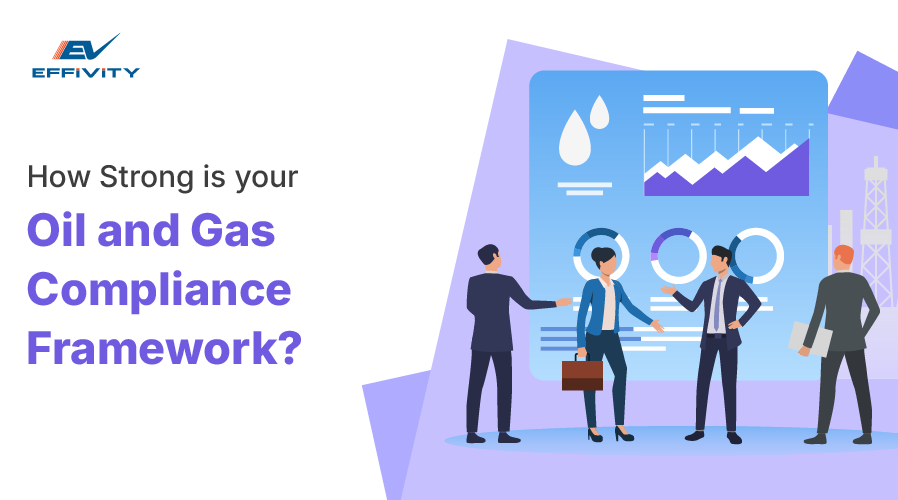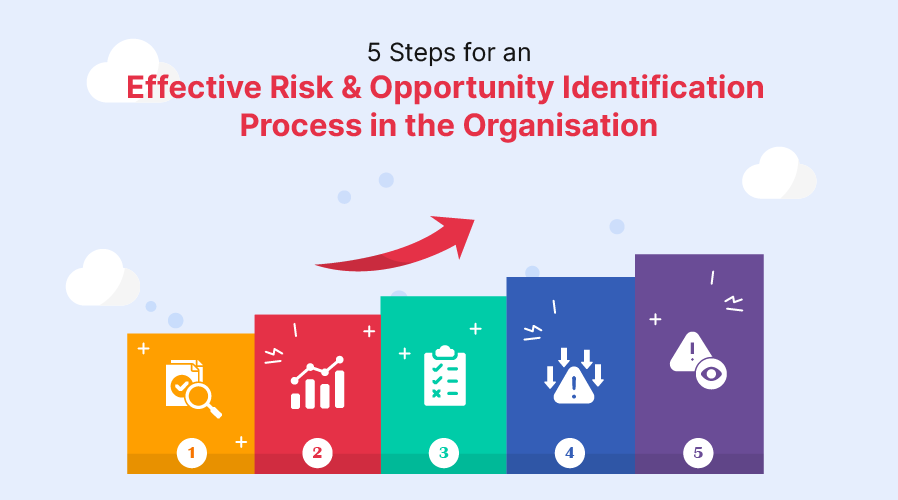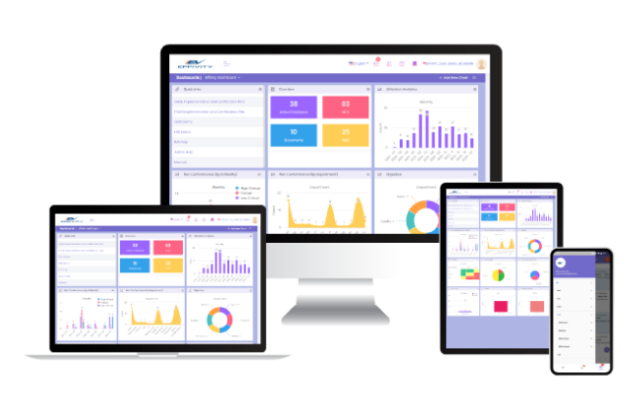When it comes to conforming to compliance regulations and requirements, the oil and gas industry presents unique challenges. This is partially due to how tightly safety, environmental responsibility, and operational discipline are tied to day-to-day activities. A small error in compliance management can lead to serious consequences.
Regulatory compliance in oil and gas has grown more stringent over the years. From OSHA’s safety mandates and ISO 45001 for occupational health to environmental regulations like the EPA’s Clean Air Act and the UK’s Environmental Permitting Regulations, companies are now expected to meet standards across multiple jurisdictions.
Manual processes and fragmented systems make operational risk management harder. Delayed maintenance logs, scattered incident reports, and paper-based audits can quickly create gaps that lead to penalties and accidents.
This article breaks down what strong oil and gas compliance means, the core components of an effective compliance framework, common challenges, and actionable best practices.
What Is an Oil and Gas Compliance Framework?
An oil and gas compliance framework is a structured system that helps companies meet all legal, regulatory, and internal requirements across their operations. It is a set of policies that defines how compliance is built into daily workflows.
This framework applies across every stage of the industry:
- Upstream: drilling operations, well safety, and site inspections.
- Midstream: pipeline transport, hazardous material handling, and spill response.
- Downstream: refining, storage, distribution, and environmental reporting.
Core Components of an Oil and Gas Compliance Management Framework
A strong oil and gas compliance framework spans across departments, from field operations to audit and reporting and must address safety, environmental responsibility, asset reliability, and documentation. Here are the most important components:
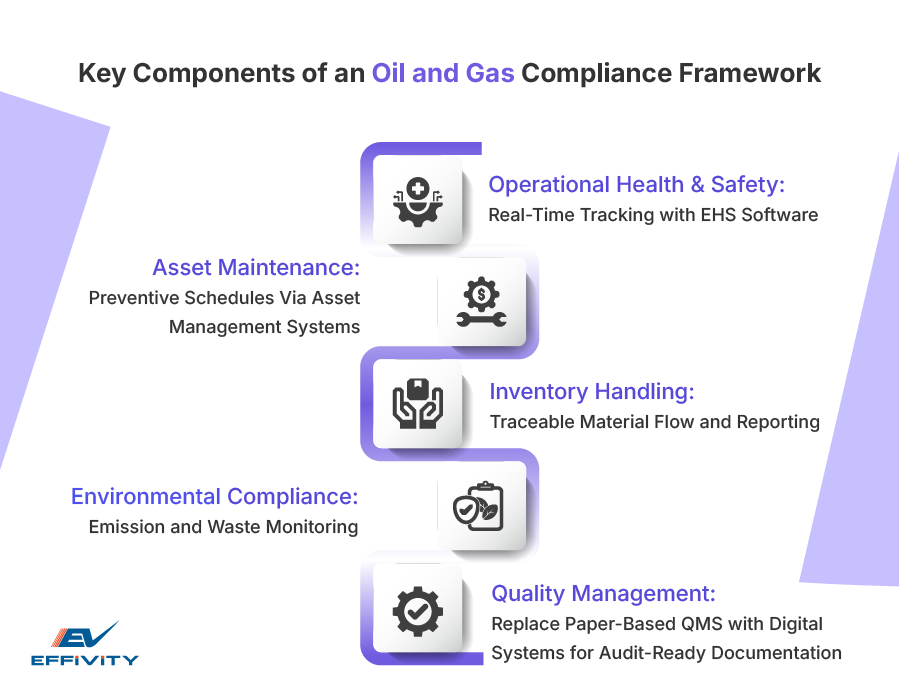
1. Operational Health and Safety
Compliance starts with how well an organisation manages workplace safety. Standards like OSHA and ISO 45001 require companies to document safety risks, train staff, and report incidents systematically. This involves building a safety culture where frontline teams are part of the feedback loop.
Modern operators are shifting from manual reporting to digital EHS software, which makes it easier to log incidents, conduct audits, and track corrective actions in real-time. This improves visibility across locations and helps reduce preventable events.
2. Asset Integrity and Maintenance
A well-maintained asset is a compliant asset. Regulators now expect proof of scheduled inspections, maintenance logs, and repair histories. Unplanned downtime or equipment failure can trigger safety incidents and regulatory fines.
A digital oil and gas asset management system enables companies to set preventive maintenance schedules, track performance data, and document every intervention. This makes audits faster and provides evidence of compliance during inspections.
3. Inventory and Material Handling
The storage, transfer, and disposal of hazardous materials are heavily regulated. From drilling chemicals to flammable liquids, companies are required to track inventory movements, maintain labelling accuracy, and report usage across their supply chain.
Using dedicated oil and gas inventory management systems allows operators to assign unique IDs, track shelf-life, and respond quickly to recalls or spill events. Without this level of control, compliance reporting becomes reactive and error-prone.
4. Environmental Compliance
Across geographies, emission thresholds and waste disposal protocols are tightening. Regulatory bodies require documentation of air emissions, water discharge, and hazardous waste handling. Inaccurate data or delayed reporting can result in fines or operational shutdowns.
Companies are now investing in automated monitoring tools and integrating environmental data into central platforms. These tools support compliance with safety and environmental standards, and also help meet ESG disclosure expectations from investors and regulators.
5. Quality Assurance and Documentation
A standardised quality management system ties everything together. It governs how policies are written, revised, and distributed and how compliance is documented across teams. Many companies still rely on spreadsheets or email-based approvals, which leave gaps in version control and audit traceability.
Replacing your paper-based QMS with cloud-based platforms improves document control, enables faster approvals, and ensures teams always work from the latest version. It also simplifies audits by offering a single source of truth for compliance data.
Is Your Oil and Gas Compliance Framework Effective? A Checklist
If you have all the core components in place, you’re halfway there. However, effectiveness depends on how well those systems work together on the ground. A compliant framework must function reliably across teams, locations, and daily operations.
Use the checklist below to assess whether your oil and gas compliance framework is actually working:
- Is your quality management system digital, accessible, and regularly updated?
- Are safety incidents, near misses, and hazards logged and resolved in real-time?
- Do maintenance teams follow preventive schedules backed by asset data?
- Is your waste management process tracked from generation to disposal?
- Are inventory records accurate, traceable, and audit-ready?
- Can you generate compliance reports without relying on manual data entry?
- Is there a documented emergency response plan, and has it been tested recently?
- Do field teams understand compliance policies and report issues consistently?
Oil and Gas Compliance Best Practices
Having a compliance framework in place isn’t enough. How it’s executed is what actually matters. Here are a few proven practices that improve accountability, speed, and accuracy across compliance processes.
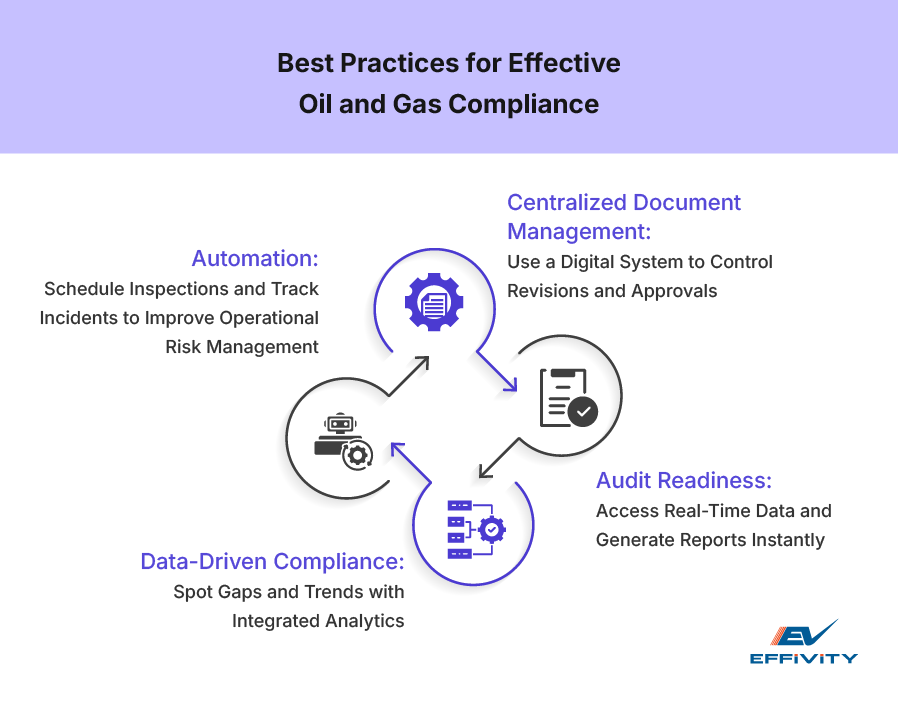
1. Centralized Document Management
A digital document control system helps manage SOPs, inspection forms, training logs, and policies from one place. Teams can track revisions, approvals, and policy updates without relying on printed documents or scattered email threads. This reduces confusion and ensures everyone works from the latest version.
2. Audit Readiness and Reporting
Staying ready for audits means more than collecting paperwork at the last minute. With structured audit management tools, teams can access real-time data, generate reports instantly, and use predefined templates for faster submissions. It strengthens your overall oil and gas compliance posture.
3. Data-Driven Compliance
Digital transformation in oil and gas allows for smarter decision-making. By integrating compliance systems with operations, you can identify recurring gaps, monitor trends, and take action before issues escalate. Data analytics and oil and gas data management helps move compliance from reactive to strategic.
4. Risk Management and Automation
Shifting from reactive fixes to proactive processes is key. Automated alerts, inspection schedules, and incident tracking reduce manual oversight and improve operational risk management across departments.
Build a Future-Ready Compliance Framework with Effivity
Oil and gas compliance is no longer limited to ticking regulatory boxes. It directly impacts operational efficiency, worker safety, environmental performance, and brand trust.
Relying on spreadsheets, manual checklists, or siloed systems won’t hold up against the scale and complexity of modern operations. Managing operational health and safety, asset maintenance, and environmental standards needs a system that’s built for speed and accountability.
Effivity helps oil and gas companies move beyond outdated methods. Its prebuilt modules support ISO and EHS standards, while its cloud-based quality management system brings structure to your compliance processes. With mobile dashboards, audit-ready workflows, and centralized tracking, teams can focus on real risks instead of chasing paperwork.
If you’re ready to upgrade your compliance framework, schedule a consultation or demo with Effivity today.

